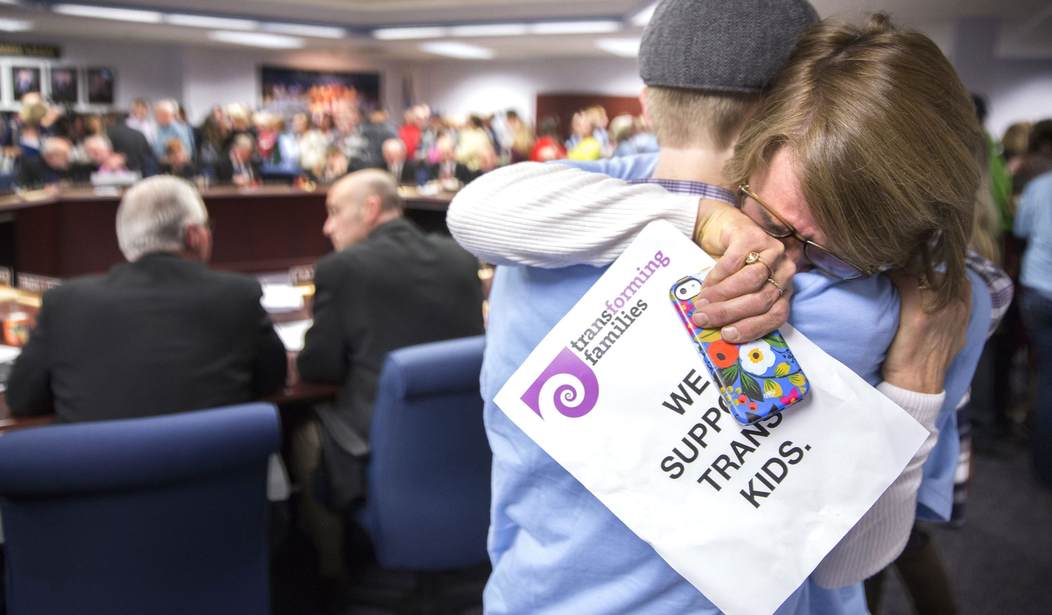Johanna Eager, program director of the Human Rights Council’s Welcoming Schools program, said what the Minnesota Department of Education has done will show other public schools across America that “they, too, can develop policies and practices to support transgender students despite the lack of support from Betsy DeVos and the Trump administration.”
Brenda Cassellius, whose four kids attend public schools in Minnesota, said the state Department of Education had undermined her “authority as a parent.” And another parent, Barb Anderson, complained state education officials were encouraging “teachers to teach false concepts of gender.”
Minnesota teachers and school administrators will begin their 2017-18 scholastic year with a new set of guidelines to help them protect the rights, and stop school bullying, of transgender students; “A Toolkit for Ensuring Safe and Supportive Schools for Transgender and Gender Nonconforming Students.”
Stephani Liesmaki, Minnesota Family Council spokeswoman, said the toolkit also “threatens student privacy, safety and dignity, attempts to erase differences between the sexes, which has a profoundly negative effect on women and girls and drastically undermines parental authority.”
Among other things, the transgender toolkit advises school officials to never separate classes into boy and girl groups, nor should administrators and teachers assume they know the gender of a student just by looking at him or her.
“Gender identity, assigned sex and sexual orientation are separate identity characteristics according to the American Psychological Association and National Association of School Psychologists. Any student, including transgender and gender nonconforming students, may be heterosexual, gay, lesbian or bisexual,” the introduction of the Toolkit advises. “Gender identity does not correlate with sexual orientation.”
And even when a schoolteacher or administrator thinks he has the student’s gender figured out, the toolkit points out that identifying the gender can be difficult.
For instance: “Language around gender is evolving. In some communities, the term ‘Two-Spirit’ is used for an American Indian person possessing a blend of male and female spirits. The term honors people of native heritage. Two-spirit students traditionally do not seek out medical transition nor use the language of transgender nor gender nonconforming to describe their gender.”
The guidelines also state “transgender students should be afforded equal opportunities to play sports.” That means no student should have to provide a note from his or her doctor attesting to his or her gender identity. If a student who looks like a girl says she is a boy or vice versa, that student should be allowed to play on the team of his or her choice.
The guidelines state the same rule should apply to school events like homecoming and prom dances.
“For example, one tradition of many schools is to have a male homecoming king and a female homecoming queen. In these situations, the school should allow a student to participate according to their gender identity,” the toolkit reads.
“In an effort for inclusivity, schools may wish to consider revisiting existing traditions or establishing new traditions,” the toolkit advises. “For example, instead of electing a homecoming king and homecoming queen, some schools have chosen to nominate ‘prom ambassadors,’ ‘homecoming court’ or ‘homecoming royalty.’”
The choice of restrooms and locker rooms should be left up to the student, the report says. Rather than forcing the transgender or gender nonconforming student to use a separate facility, any student who feels uncomfortable sharing a bathroom or a locker room with transgender kids would have to use another facility.
The same goes for hotel accommodations on student trips for field trips and sports. The students should be allowed to room with “peers who match the student’s gender identity.”
The toolkit also advises school districts to offer the parents of transgender and gender nonconforming students special services such as educational information and professional resources to help with their kid’s transition to a new gender.
“Students and their families make their own decisions about what the student needs during transition as every student’s transition is unique,” the guidelines stress.
Minnesota officials called the transgender toolkit a response to a 2016 survey that showed transgendered students were less likely than heterosexual kids to feel safe at school and more likely to be “bullied weekly or more.”
The 2016 Minnesota Student Survey also showed that more than half of all transgender, lesbian and gay students had attempted suicide.
Gary Amoroso, executive director of the Minnesota School Administrators Association, doesn’t think most people, whether they are in favor of, or against, a new set of guidelines to help schools deal with transgendered students understand the “Transgender Toolkit.”
“The toolkit is not something that districts are required to use, and it’s not something that a district must either choose to opt into or opt out of. It is simply a resource that’s available,” he told the Minnesota Public News Service.
Eva Wood, LGBTQ advocate and anti-violence program director of OutFront Minnesota, doesn’t think public schools should be allowed that degree of flexibility.
“The schools where trans kids tend to have more trouble,” Wood said, “are probably going to be the same schools that choose not to adopt it.”









Join the conversation as a VIP Member